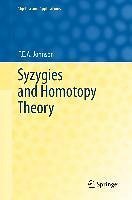From the reviews:
"The book Syzygies and Homotopy Theory is concerned with the algebraic classification of certain finite dimensional geometric complexes with a nontrivial, finitely presented fundamental group G and is directed towards to basic problems ... . Syzygies and Homotopy Theory is well written, nicely organized, and is a pleasure to read. One particularly attractive feature of the book is its attention to detail, and the background chapters may well appeal to an audience wider than that of specialists." (Marek Golasinski, Zentralblatt MATH, Vol. 1233, 2012)
"The book Syzygies and Homotopy Theory is concerned with the algebraic classification of certain finite dimensional geometric complexes with a nontrivial, finitely presented fundamental group G and is directed towards to basic problems ... . Syzygies and Homotopy Theory is well written, nicely organized, and is a pleasure to read. One particularly attractive feature of the book is its attention to detail, and the background chapters may well appeal to an audience wider than that of specialists." (Marek Golasinski, Zentralblatt MATH, Vol. 1233, 2012)

